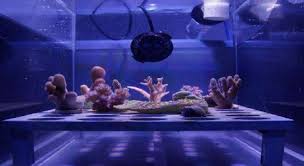A bio degradable film 50,000 times thinner than human hair might protect Australia’s Great Barrier Reef from environmental destruction, said research.
Tests conducted by Scientists from the Australian Institute of Marine Biology shows a floating ‘sun shield’ made of calcium carbonate that has been shown to protect the reef from the effects of bleaching. Great Barrier Reef Foundation managing director Anna Marsden said, “It’s designed to sit on the surface of the water above the corals, rather than directly on the corals, to provide an effective barrier against the sun.”
The Great Barrier Reef, which sees millions of tourists flocking every year, and is home to a number of marine species, has borne the brunt of ‘coral bleaching’ caused by climate change, which leads to an increase in temperatures at sea.

According to Phys Org the trials on seven different coral types found that the protective layer decreased bleaching of most species, cutting off sunlight by up to 30 percent. Marsden said it was impractical to suggest that the “sun shield”—made from the same material found in coral skeletons—could cover the entire 348,000 square-kilometre (216,000 square-mile) reef. “But it could be deployed on a smaller, local level to protect high-value or high-risk areas of reef,” she added.
However, she maintained that while the concept needs more work and multiple rounds of testing, it is a great step towards preserving the sanctity of the Great Barrier Reef for generations to come.
A previous report by Deloitte Access Economics valued the Great Barrier Reef as an asset worth AUS $56 billion, which includes tourism revenues, and indirect value for people who have not yet visited the site but know of its existence.
































